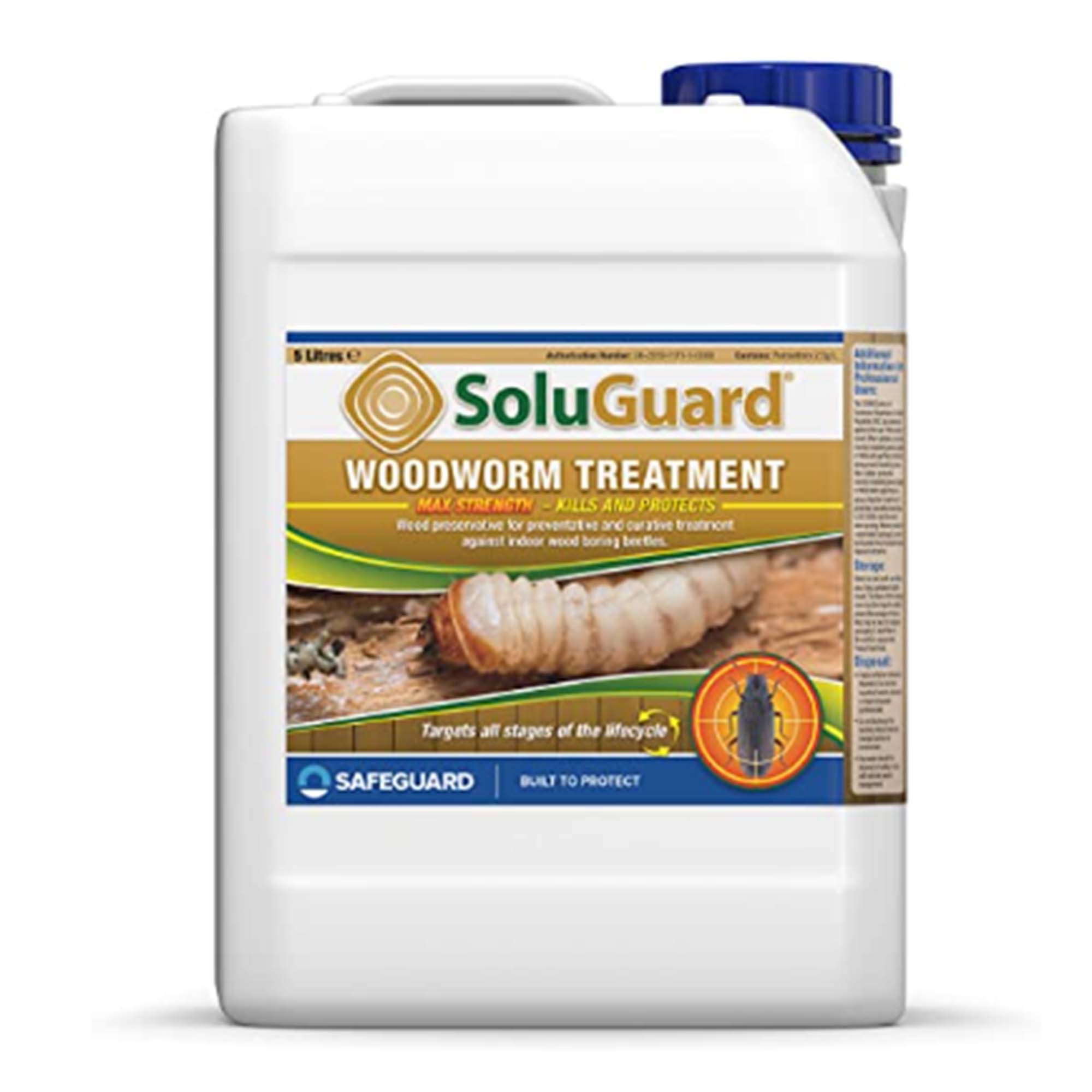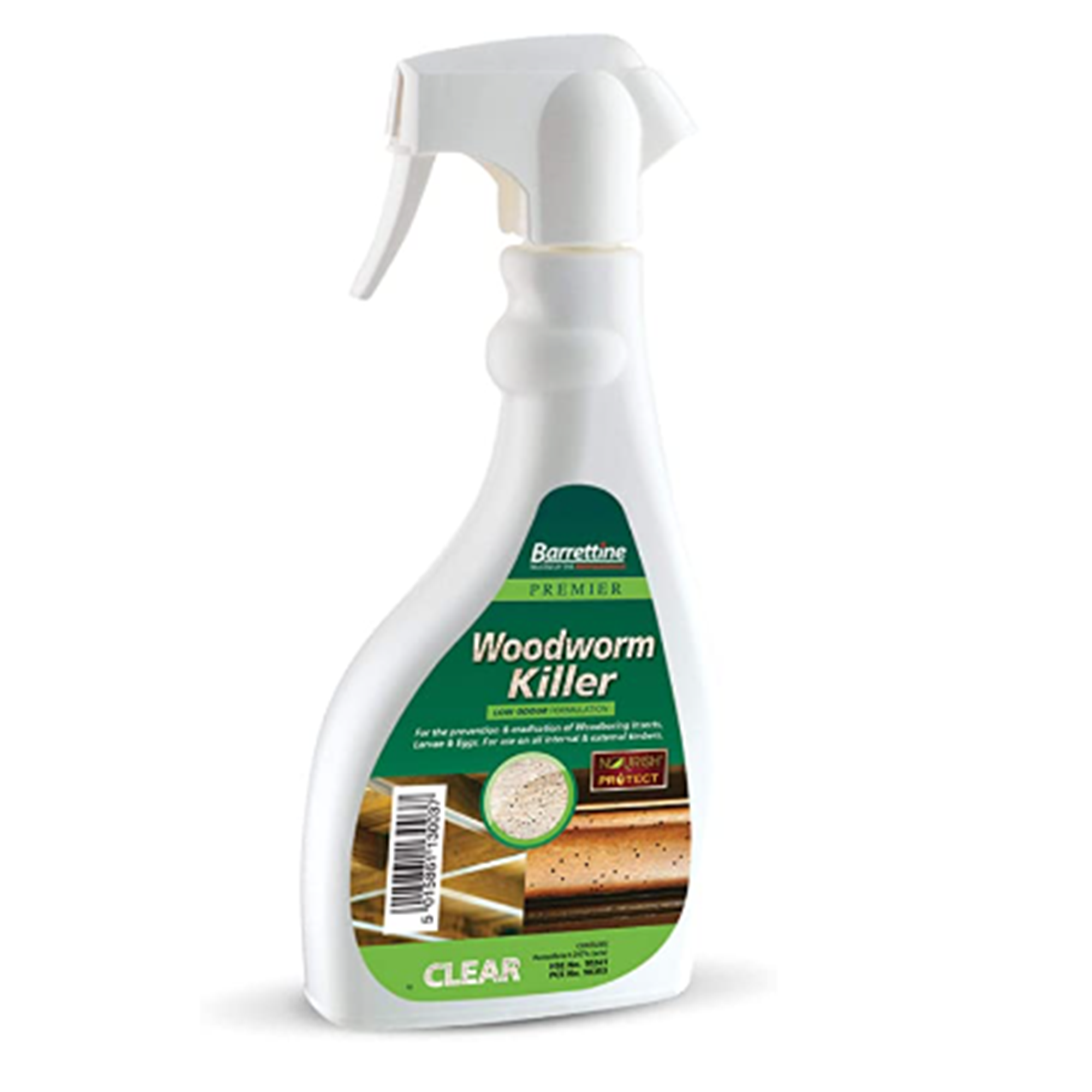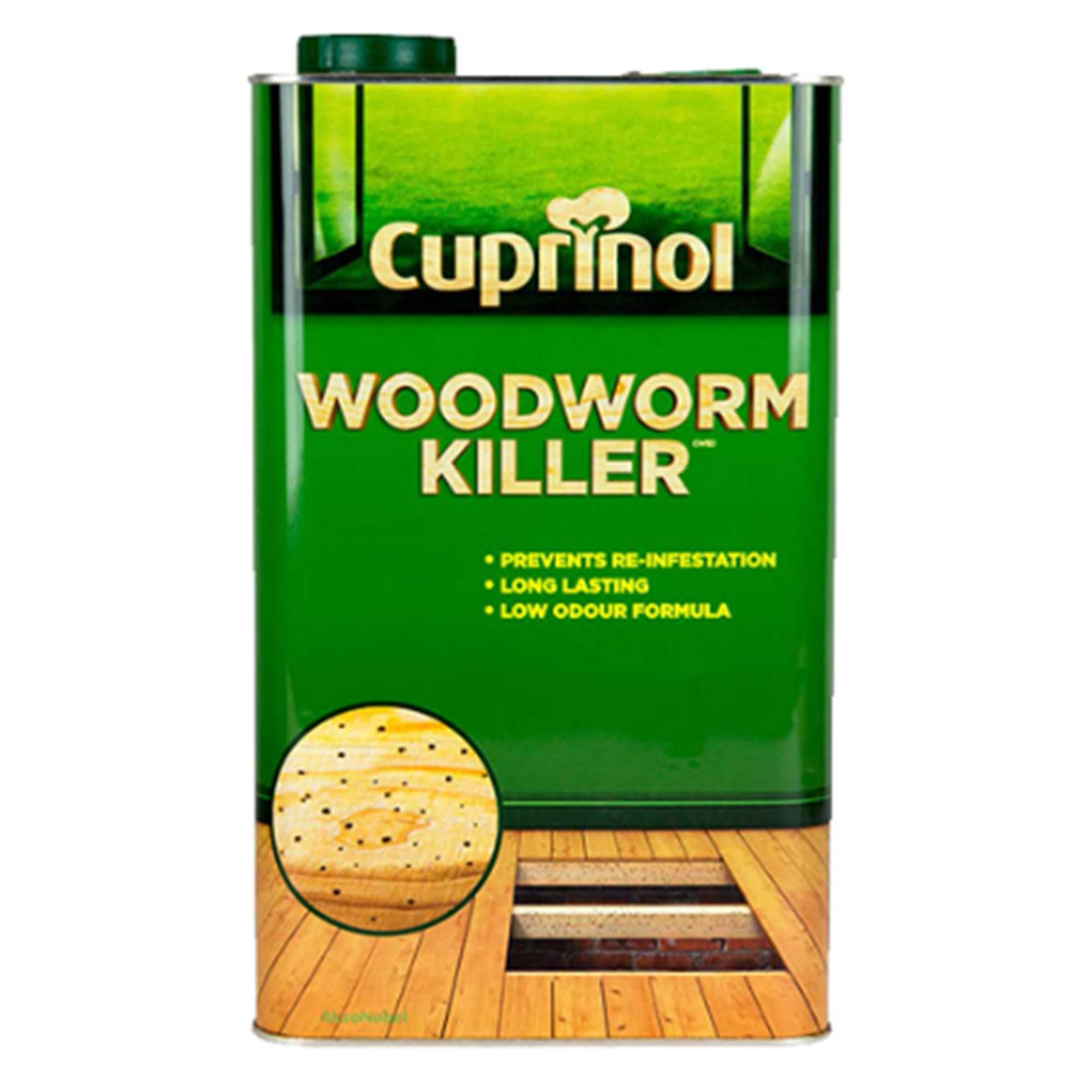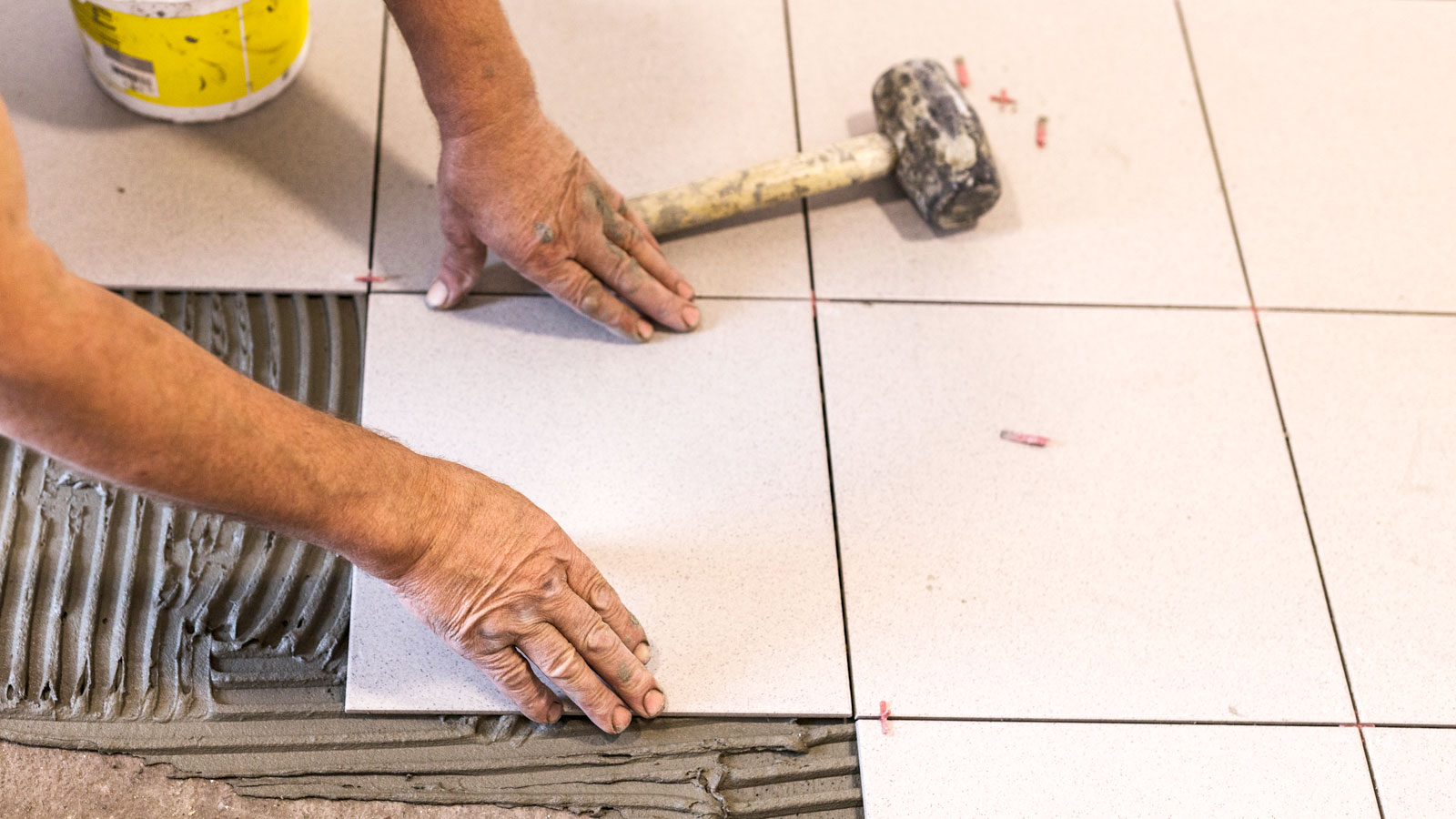How to treat woodworm and get rid of it for good
Discover how to treat woodworm professionally and DIY, why this common pest occurs and what you can do to prevent it when renovating a house
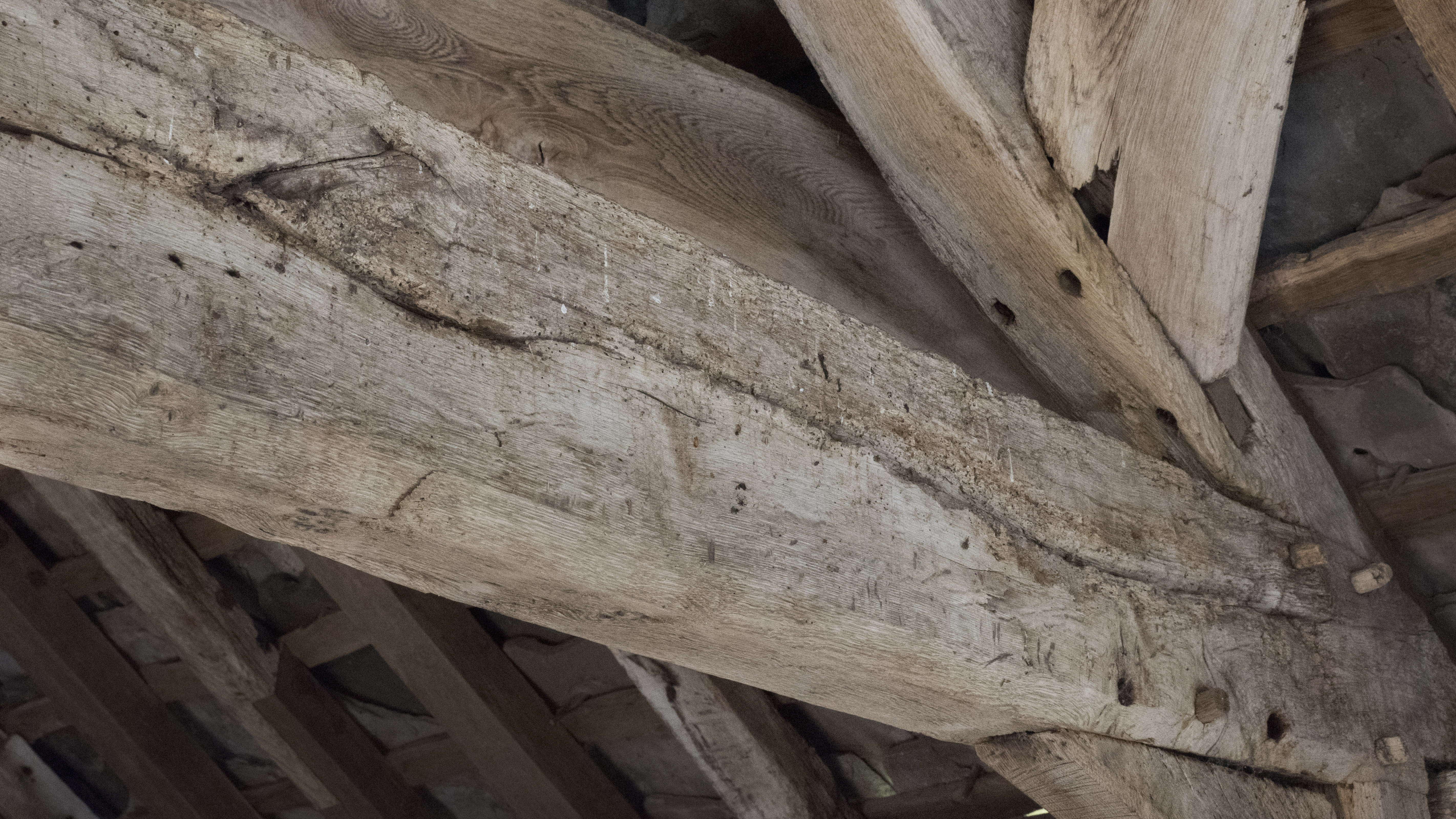
If you're renovating a home with timber beams, knowing how to treat woodworm is a great tool in your arsenal. A relatively common issue in the UK, woodworm are wood-boring insects who love to snack on anything wooden.
Woodworm usually makes an appearance in damp and poorly ventilated areas, where wood cannot dry out, which is why it is a concern when renovating a house. Like fungus, they prefer a moist environment, as this makes their supper much easier to chew. Infestations usually target areas that are left undisturbed, such as wooden beams or joists in buildings, covered floorboards, or furniture that is in storage.
Left untreated, active woodworm can cause serious structural and aesthetic problems, especially in old timber frame buildings. It can also totally obliterate smaller items like wicker baskets.
In this article, we’ll look at how to identify whether a woodworm attack is active or historic, whether treatment is required, and if necessary, how that treatment can be applied and repairs made.
What is woodworm?
‘Woodworm’ refers to the white, caterpillar like, larvae of certain beetles. The larvae burrow into wood, eating the timber and forming tunnels as they chew their way through whichever unfortunate object they have adopted as their childhood home.
Eventually, the larvae pupate and the adult beetles emerge between late spring and autumn, leaving their telltale exit holes behind them.
Adult beetles are smaller than a grain of rice, and have a very short lifespan after they have emerged from the wood, with a four day ‘flight season’ for males, and two weeks for females.
Bring your dream home to life with expert advice, how to guides and design inspiration. Sign up for our newsletter and get two free tickets to a Homebuilding & Renovating Show near you.
Once they have emerged, the beetles mate, and the females then return to lay their eggs in the exit holes they made earlier. The eggs hatch into larvae, which then make their way through the tunnels left by their predecessors, often deeper into the wood, thus continuing the cycle of timber degradation. This can be particularly problematic for old timber frame buildings.
Knowing the tell-tale signs of woodworm and its causes will help you assess a home for renovation so you know what will be involved.
How do you know if woodworm is active?
Unless serious structural damage has been done at which case a structural engineer will need to be consulted, inactive woodworm is completely harmless. However, active woodworm should be treated to prevent further damage.
It’s surprisingly simple to tell if you have had a case of woodworm infestation on visible wood: all you need to do is check your timbers for small holes in the face of the wood.
These exit holes will be very small, <5mm diameter, and are not easily spotted without close inspection. Sometimes there might only be one or two holes, but in more extreme cases there can be lots quite close together.
Exit holes from active woodworm will look ‘fresh’: clean and bright, like newly sawn wood, whereas older holes look dull and have rounded edges. However, just the presence of holes doesn’t mean that woodworm is necessarily active.
Fresh ‘frass’, a very fine wood dust produced by the beetles as they burrow through the timber, is another good indicator of an active infestation. If you leave a piece of paper under affected wood between March and October, you might be able to spot new frass as the beetles emerge for their flight season.
However, the most obvious sign of an active infestation is to find actual beetles. Once the beetles leave the wood, they tend to fly towards a source of light in search of a mate, so window sills are a good place to check for beetles waiting for their first date!
You can undertake some ‘experiments’ to find if your woodworm is active, such as plugging holes with beeswax, and waiting to see if an adult beetle bores through, but you might not see anything for a year or more.

Can I treat woodworm myself?
While there are many companies offering treatments for woodworm, it’s often much cheaper and just as effective to treat woodworm yourself, just as you would fix creaky floorboards.
Use a dehumidifier
The first course of treatment should always be to ensure that timbers are dry, and to eliminate any causes of damp. Dry timber is immune to woodworm attack, so aim to reduce moisture content of wood to below 15%.
You can use dehumidifiers (like this one from Amazon) to control condensation, and ensure you are heating your home to a reasonable temperature.
If you have damp issues at a wider scale, it’s important to address them before further treatments, but make sure any remedial work is sympathetic to your building, particularly if you own a historic property.
Reduce population
If an infestation is significant, pheromone or light traps can be used to help to reduce beetle populations.
Try out chemical treatments
Local DIY stores will have a range of easy to use chemical woodworm killers designed to kill the insects on contact. These treatments shouldn’t be used as a substitute for drying out the wood, or as a precautionary measure on inactive woodworm, but are more than capable of treating confined infestations.
Chemical treatments should be localised: for example, if there is active woodworm in one beam, treat just the affected area, rather than treating every timber in the house.
Look into injected treatments
There are some more ‘severe’ treatments available, like insecticidal gel or injected Permethrin treatments, for beetles that are harder to shift.
Treatments for smaller items
Individual items, such as furniture, can be treated without chemicals by popping the item in the freezer. Just wrap the object in a plastic bag and freeze for a week before thawing for a week.
Repeat the freezing process, then allow the object to completely thaw out. The first freeze kills the adult larvae, and the first thaw prompts any eggs to hatch, which are then killed in the second freeze.
At a last push, use a heat treatment
There are wider scale treatments available, such as whole building heat treatments, but these come at a significant cost and are only needed in extreme cases.
Hire a professional
If you choose to hire a professional to treat woodworm, this will affect your house renovation costs as Checkatrade estimate up to £1,000 depending on the severity.
How long does woodworm live in a piece of wood?
The larvae of woodworm beetles will live in timber for up to five years before they pupate and emerge as adult beetles. Once they have emerged, the lifespan of an adult is very short — just long enough to mate and lay eggs for the next generation.
What happens if you leave woodworm untreated?
Woodworm larvae cause damage by tunnelling through the wood, burrowing further into the timber with each generation. If woodworm is left untreated, the larvae will eventually create a web of tunnels under the surface of the wood, which in time will ultimately lead to structural failure of the timber, as its strength is literally eaten away.
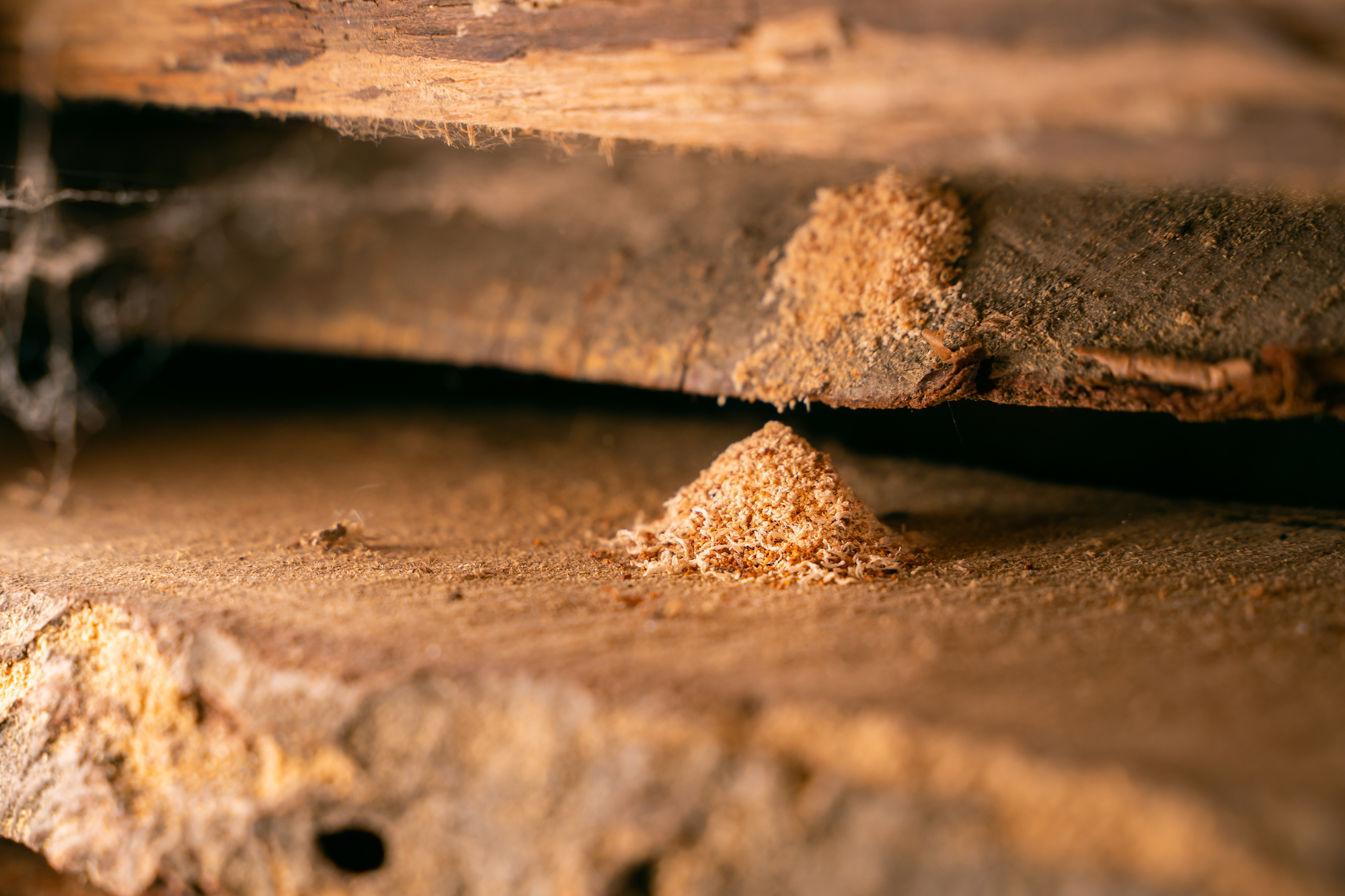
How do you keep woodworm from coming back?
The key to preventing woodworm from returning is monitoring moisture levels. Keeping your home well heated and ventilated will help to minimise damp problems and keep future woodworm infestations at bay.
It’s also important to avoid introducing woodworm into your house, so thoroughly check new purchases such as antique furniture before you bring them inside, and store your firewood outside.
Woodworm is less likely to affect treated wood, as timber that has been oiled or varnished tends to have a smoother finish with less cracks, fissures or textures that a beetle could deem suitable in which to lay their first eggs.
When you’re treating wood, make sure that any finish you apply is vapour permeable (you can check this by asking the manufacturer if the finish has an "SD value” of >0.05) as this will help to prevent a build up of moisture in wood.
What should you do with beams that have been affected by woodworm?
Unless the infestation of woodworm has been severe, it’s often best to leave the woodworm holes as they are and put the texture down to ‘added character’. Often, it’s attempting to sandblast, scrape or plane down the timber to achieve an untarnished finish, however this removes the outer layer of the timber and can expose the messy web of tunnels left by the woodworm larvae underneath. Removing the outer layer of the wood also damages the historic value of timbers.
If the holes left by the woodworm really bother you, you can fill them with an appropriately coloured wood filler or paint over the affected area to disguise the damage.
If woodworm has caused significant damage leaving timber structurally unsafe or irreparable, it might be necessary to replace the damaged section or beam. There are also resin-based repairs available which can be completed by a timber specialist.
However, woodworm will only usually affect the sapwood, which is the softer, outer part of the timber, and will leave the strong heartwood undamaged. The heartwood holds the strength of the timber, so if only the outer layer of wood is damaged replacement or repairs may not be necessary.
A specialist surveyor can make a report on affected areas and advise on a suitable course of action. However, these repairs or replacements should only be carried out conservatively and where absolutely necessary. Generally, DIY treatments are more than adequate, and if carried out properly can save you a lot of money and hassle.
Rosie is an interior textile designer renovating a 36 room farm in rural North Yorkshire. She is a heritage property enthusiast, developing her DIY skills as she sympathetically restores her home. She takes on a range of tasks on a DIY basis, from beam restoration and repointing to tiling and lime plastering, and creates beautiful spaces in the process.
